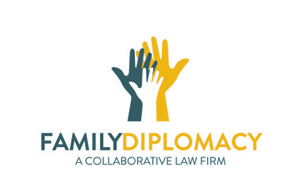Potential Drawbacks to Collaborative Divorce
I strongly believe that the vast majority of Tampa Bay spouses who are considering divorce would be best served by engaging in the collaborative divorce process, where attorneys are used as problem-solvers rather than gunslingers. Decisions such as where children will sleep at night are made by parents rather than judges, and interactions between the parents are private and confidential rather than public and discoverable by their children in the future.
And yet, I would be remiss if I were to not underscore that there are potential disadvantages to the collaborative divorce process. In fact, in 2009, the American Bar Association Section of Dispute Resolution, Collaborative Law Committee Informed Consent Subcomittee published its draft Suggested Protocols to Obtain Clients’ Informed Consent to Use a Collaborative Process.

From the Suggested Protocols, families who are considering the collaborative process should know the following:
i. All parties have the right to unilaterally terminate a Collaborative law
process for any reason.
ii. The Collaborative process terminates if any party initiates or intervenes in
a legal proceeding related to the Collaborative case.
iii. If the Collaborative process terminates, the Collaborative lawyers for all
parties and any lawyer in a law firm with which the collaborative lawyer is
associated may not represent a party in a legal proceeding. In a multiparty
dispute, a party may give notice that the process is terminated and the
other parties may sign new participation agreements and continue without
that party.
iv. There may be additional time and costs involved with hiring new lawyers
if the Collaborative process terminates. As a result, parties may feel
pressured to settle to avoid hiring new lawyers.
There is a chance that the collaborative process will fall apart and, if it does, it will probably be more expensive than if the parties proceeded in the litigation process to begin with.
And yet, you should also know that most collaborative cases do not fall apart. Though all cases are different, based on a 2010 research project of the International Academy of Collaborative Professionals, almost 90% of those who utilized the collaborative process reached a full agreement, with an additional 2% of divorcing spouses reconciling. For those who did not reach a full agreement and had to terminate the process, many reached a partial agreement and narrowed the issues that ultimately had to be decided by a judge.
Regardless if you ultimately decide to utilize the collaborative process in family law, it is important to speak with an attorney who has had, at a minimum, a 2-day introductory collaborative training to determine if it is right for your family. You can find a comprehensive list of trained collaborative professionals in Hillsborough, Pinellas, Pasco, Sarasota, and Manatee counties and beyond at http://nextgenerationdivorce.com/professionals/.
To schedule a consultation with Adam B. Cordover of Family Diplomacy: A Collaborative Law Firm regarding the pros and cons of the collaborative divorce process, call us at (813) 443-0615 or fill out our contact form.
—
Adam B. Cordover now practices exclusively in out-of-court dispute resolution with a focus on collaborative divorce and family law, mediation, and unbundled legal services. Adam is president of Next Generation Divorce, one of the largest interdisciplinary collaborative practice groups in the United States. Adam is also on the Board of Directors of the Florida Academy of Collaborative Professionals, and he is on the Research Committee of the International Academy of Collaborative Professionals.






Trackbacks & Pingbacks
[…] Potential Drawbacks of Collaborative Divorce […]
Leave a Reply
Want to join the discussion?Feel free to contribute!